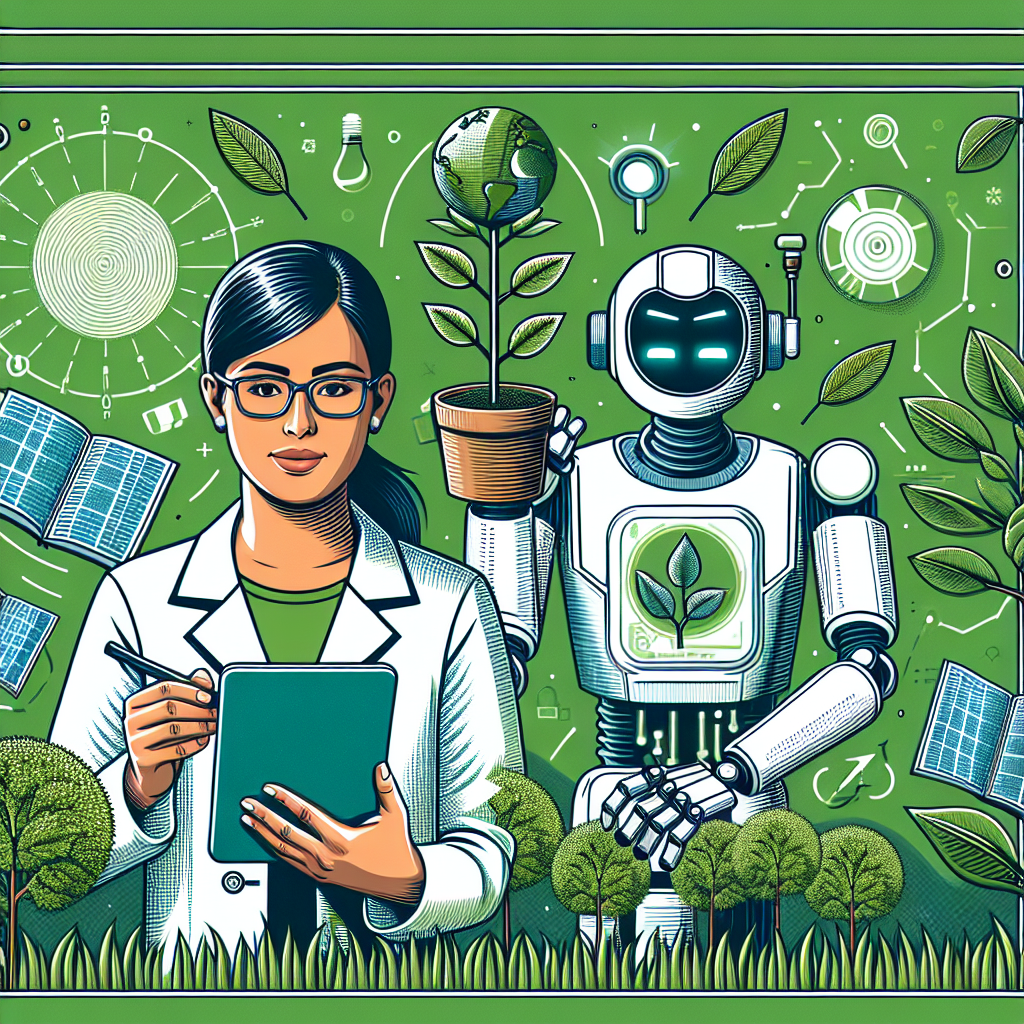With the increasing threats to our planet’s environment, there is a growing need for effective education and awareness programs that promote sustainability and conservation. One innovative approach that has shown promise in this regard is the use of artificial intelligence (AI) in environmental education.
AI technologies have the potential to revolutionize the way we teach and learn about environmental issues. By leveraging the power of AI, educators can create personalized learning experiences that are engaging, interactive, and tailored to the individual needs of students. AI can also help to collect and analyze vast amounts of data on environmental trends, enabling educators to provide students with real-time information on issues such as climate change, deforestation, and pollution.
In this article, we will explore the ways in which AI is being used to promote sustainability and conservation through environmental education. We will also address common questions and concerns about the use of AI in this field.
How AI is being used in environmental education
There are a variety of ways in which AI is being used to enhance environmental education and promote sustainability and conservation. One of the most promising applications of AI in this field is the development of personalized learning platforms that can adapt to the individual needs and learning styles of students.
For example, AI-powered learning platforms can analyze the performance of students in real-time and provide personalized feedback and recommendations to help them improve their understanding of environmental concepts. These platforms can also incorporate interactive elements such as quizzes, games, and simulations to make learning more engaging and effective.
AI can also be used to collect and analyze large amounts of data on environmental trends, enabling educators to provide students with up-to-date information on issues such as climate change, deforestation, and pollution. This data can be used to create interactive visualizations and simulations that help students understand complex environmental concepts in a more intuitive way.
In addition, AI can be used to create virtual reality (VR) and augmented reality (AR) experiences that allow students to explore and interact with virtual environments that simulate real-world ecosystems and conservation projects. These immersive experiences can help students develop a deeper appreciation for the natural world and the importance of protecting it.
Common concerns about AI in environmental education
While the use of AI in environmental education holds great promise, there are also a number of concerns and challenges that need to be addressed. One of the main concerns is the potential for AI to reinforce existing biases and inequities in education. For example, AI algorithms may inadvertently perpetuate stereotypes or discrimination by relying on biased data or assumptions.
Another concern is the potential for AI to replace human educators and diminish the quality of the learning experience. While AI can enhance and supplement traditional teaching methods, it is important to ensure that human educators remain at the center of the learning process and that AI is used as a tool to support their work, rather than replace it.
There is also a concern about the ethical implications of using AI in environmental education. For example, there are questions about data privacy and security, as well as the potential for AI to be used for surveillance or other nefarious purposes. It is important for educators and policymakers to establish clear guidelines and regulations to ensure that AI is used responsibly and ethically in the field of environmental education.
FAQs about AI in environmental education
Q: How can AI help promote sustainability and conservation through environmental education?
A: AI can help promote sustainability and conservation by creating personalized learning experiences, collecting and analyzing data on environmental trends, and creating immersive virtual reality experiences that help students develop a deeper appreciation for the natural world.
Q: What are some examples of AI-powered learning platforms in environmental education?
A: Examples of AI-powered learning platforms in environmental education include personalized tutoring systems, interactive simulations, and virtual reality experiences that allow students to explore and interact with virtual environments.
Q: What are some potential challenges and concerns about using AI in environmental education?
A: Some potential challenges and concerns about using AI in environmental education include the potential for bias and discrimination, the risk of replacing human educators, and ethical implications related to data privacy and security.
Q: How can educators and policymakers ensure that AI is used responsibly and ethically in environmental education?
A: Educators and policymakers can ensure that AI is used responsibly and ethically in environmental education by establishing clear guidelines and regulations, promoting transparency and accountability, and involving stakeholders in the decision-making process.
In conclusion, AI has the potential to transform environmental education and promote sustainability and conservation in innovative ways. By leveraging the power of AI, educators can create personalized learning experiences, collect and analyze data on environmental trends, and create immersive virtual reality experiences that help students develop a deeper understanding and appreciation for the natural world. However, it is important to address common concerns and challenges related to the use of AI in environmental education, such as bias, privacy, and ethics, to ensure that AI is used responsibly and ethically in this field.

